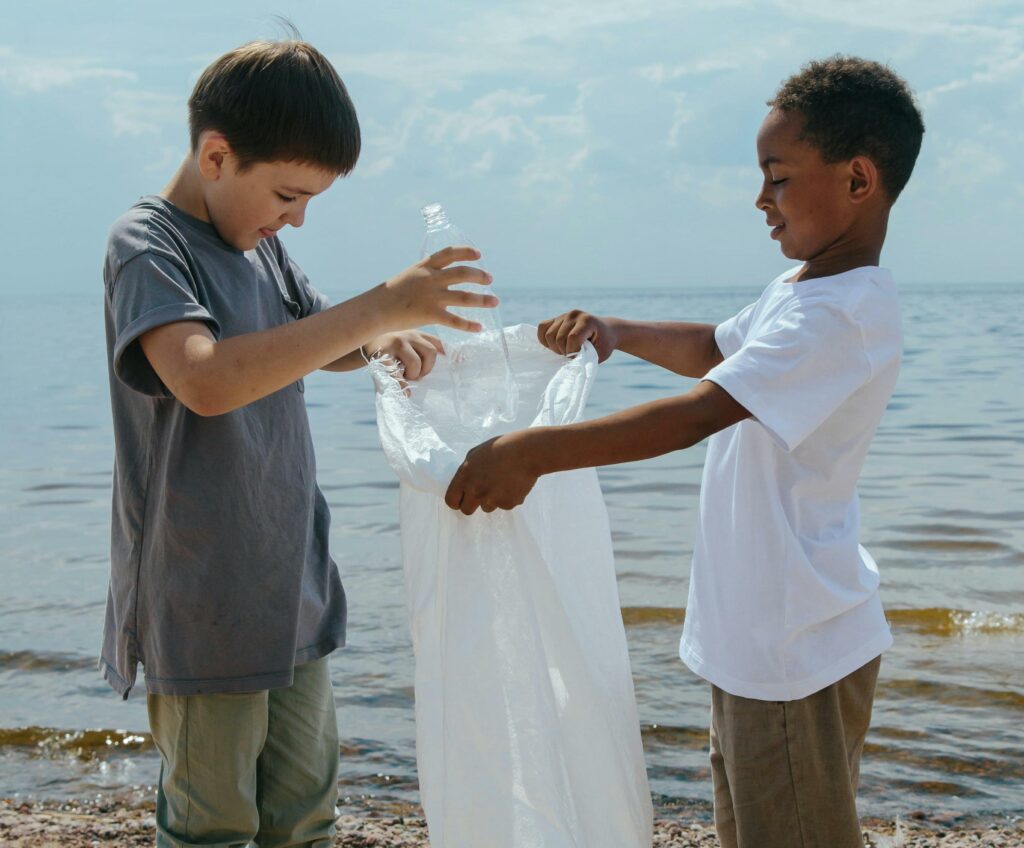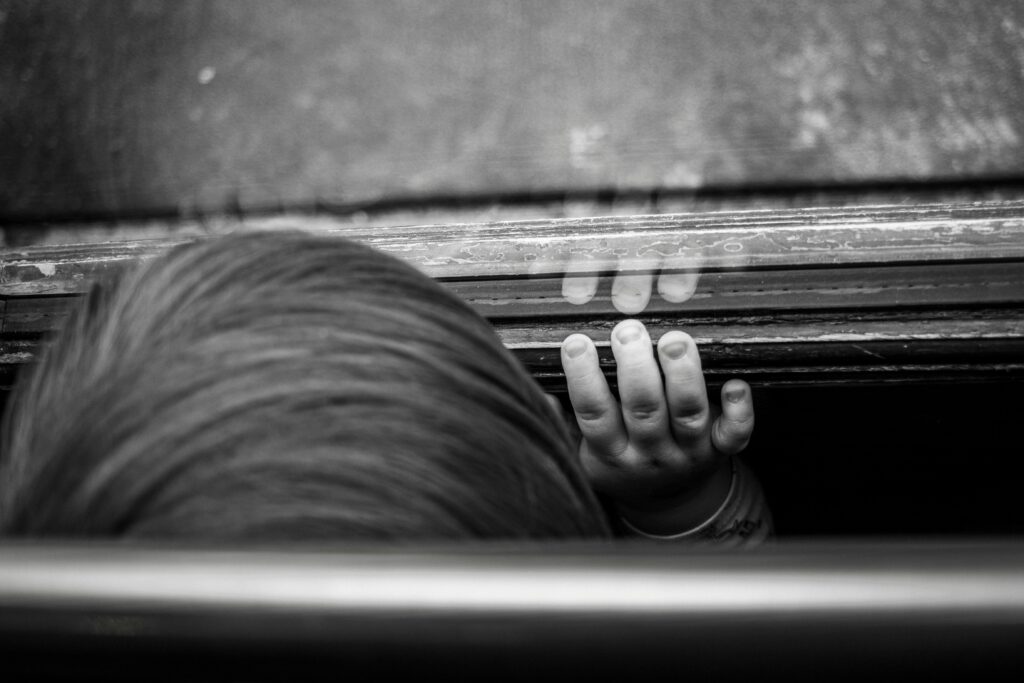As girls reach puberty, they will experience huge growth and changes to their bodies in a relatively small period of time.
As a parent, you can help your daughter through this stage. Puberty can cause them anxiety about their body’s changes or make them feel awkward or embarrassed. Here’s some steps you can take:
- Talk to them: Talk to them about the kinds of changes their bodies will experience. Explain that this is a normal process that everyone goes through.
- Share information: We have a list of books listed at the end of this post that we recommend. They can help you educate and guide your daughter through puberty.
- Give them privacy: Be sensitive to their need for privacy and avoid even good-natured teasing about their developmental changes.
- Teach them self care: As they experience puberty, girls may experience acne as well as sweating in the armpits and body odor. They also may have more oil and sweating on their scalp. You can help your daughter adjust to these changes by teaching them healthy skin care habits, teaching them to shower and shampoo more often, and providing them with antiperspirants and deodorants.
Puberty in Girls: What to expect
Breast development
Breast development is usually the first sign of puberty in girls. Their breasts will first develop breast “buds” about the size of a nickel under the nipple. They may develop unevenly and may be sore, but should improve over time.
Body hair
For about 15 percent of girls, pubic hair can be the first sign of puberty. During puberty, girls will grow coarser hair in their genital area, under the arms, and on the legs.
Vaginal discharge
About 6-12 months before their first period, some girls will experience a small to moderate amount of clear or white vaginal discharge.
Menstrual periods
Most girls have their first menstrual period within two to three years after they develop breast buds, with the average girl starting around age 12. Many girls have anxiety about their first period. So, it’s important to talk to them in advance about what to expect. You can prepare them with pads, tampons, and pantyliners for them to keep on hand at home, school and activities.
For their first period, it’s normal for girls to have bright red blood or just spotting of red-brown discharge. Their menstrual cycle and how often they have a period can also vary for each girl. Their cycles can be irregular and may not be every month. Normal cycles typically fall between 21 to 35 days between the first day of a period and the first day of the next one.
Girls often experience abdominal cramps or pain during their period. Applying heat or taking Ibuprofen or naproxen can help ease cramps. If your child’s cramps are severe and interfering with school or other activities, speak to your pediatrician.
Height and body shape
Girls will experience fast growth in height after puberty begins, and have their growth spurt younger than boys do. Girls will experience the fastest rate of height growth between their breast buds forming and about 6 months before they get their first period. After their first period, they may grow another 1-2 inches, but growing more than that is less common.
Girls’ hips will get wider and their waist may also get smaller. As their body grows, it’s not always proportional, so they may seem awkward or trip over their own feet as their body changes.
Delayed or Early Puberty
It’s normal for children to develop at different rates, starting and ending puberty years apart. However, some children experience precocious puberty. This is the early onset of puberty before age 8 in girls and before age 9 in boys. Other children may experience delayed puberty if it hasn’t begun by age 13 in girls and age 14 in boys.
If your child seems to be developing significantly different from other kids their age, contact your pediatrician at Pediatrics West at 720-284-3700. We can help determine if your child is simply developing at a different rate or if there is an underlying medical cause that may need to be treated.
For younger children (ages 4-8)
It’s Not the Stork by Robie H. Harris: This book is about reproduction, body differences, puberty, fetal development and body safety. This is an honest but age-appropriate look at “where babies come from.” Parents can use it as a reference for younger kids with lots of questions or read it as a family. This book is the first of a series with advancing discussion about this topic as the child grows. The other books are It’s So Amazing (ages 7 and up) and It’s Perfectly Normal (ages 10 and up).
What’s the Big Secret by Laurie Kransy Brown Ed.D., and Marc Brown (author of the Arthur series): This book is a fun and kid-friendly introduction to reproduction, body differences and body safety.
Books for Girls about Puberty (9 and up)
The Care and Keeping of You by American Girl and The Care and Keeping of You 2 by American Girl: These are illustrated age-appropriate guides to body changes and how to care for a girl’s growing and changing body. The second book covers greater detail and includes the escalating emotional changes as a girl grows up. These are a great place to start the discussion of puberty.
My Body, My Self for Girls by Lyndra Madaras and Area Madaras: This is a workbook and comprehensive guide to puberty for girls, with a thorough discussion of body image/changes, menstruation/period supplies, childbirth, and so much more. This book is thorough and a great place for a young woman to write their thoughts and see the thoughts of other young women.
Helloflo The Guide, PERIOD. by Naama Bloom: Helloflo is an honest, frank and funny look at all things periods. It discusses female body fashions and trends throughout the ages, changes in the developing body and lots of personal stories about sometimes, awkward rollercoaster through puberty and beyond. This was recommended by some 11-year-old patients.
The Feelings Book by American Girl: This book addresses the changing feelings and moods that come with the challenge of puberty. It includes some nice activities to help a girl explore the range of emotions she may continue to experience throughout her adult life.
Books about Sex
Let’s Talk about Sex: a Guide for Kids 9-12 and their Parents by Planned Parenthood (and Salt-N-Pepa!): This book explores reproduction and the many emotional challenges and behavioral obstacles that face teenagers and young adults. It has a parents guide at the end to facilitate discussion. It is an honest look at sex from all aspects—not just physical, but also emotional and psychological factors.
Changing Bodies, Changing Lives: A book for Teens on Sex and Relationships by Ruth Bell
“Love is Respect” website: www.loveisrespect.org: Teaches covers healthy relationships, dating, consent and how to avoid abusive relationships
“Sex, etc.” website: www.sxetc.org: Teens helped develop this website and is and targeted towards teens. It offers quizzes, articles with factual information written by teens, and other interactive features.
“Before Play” website: www.beforeplay.org: This website is the hub for Colorado and Michigan efforts to reduce unintended pregnancies. It promotes good sexual and reproductive health and well-being, and helps “normalize” conversations about these topics.


